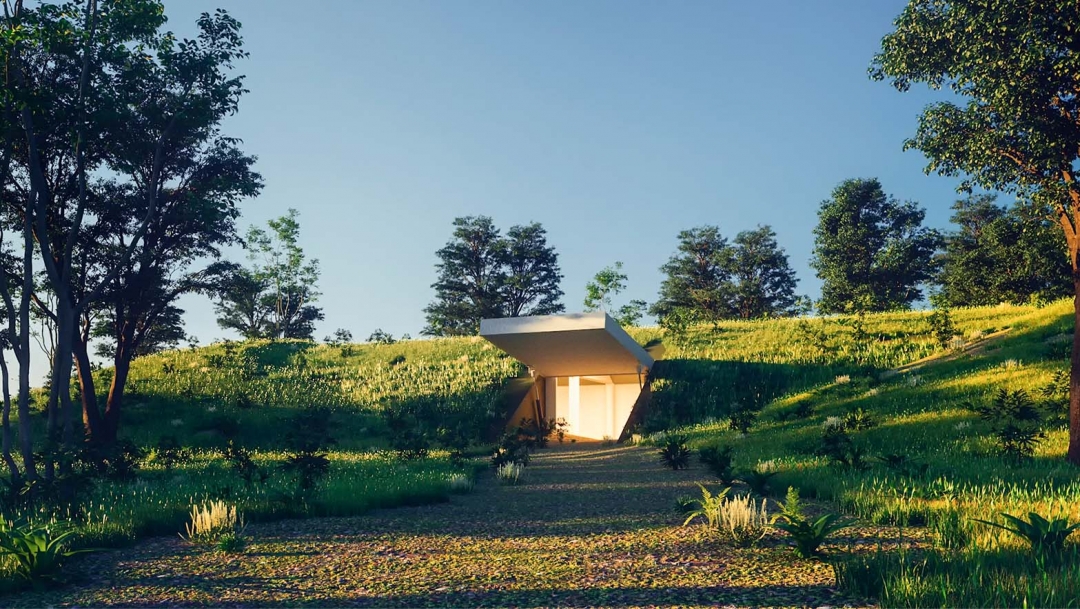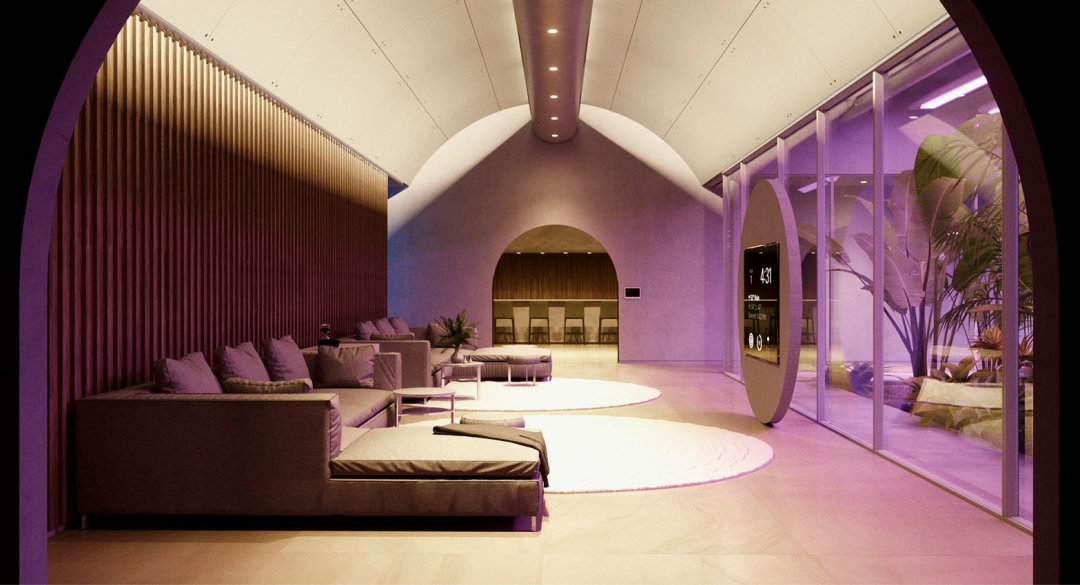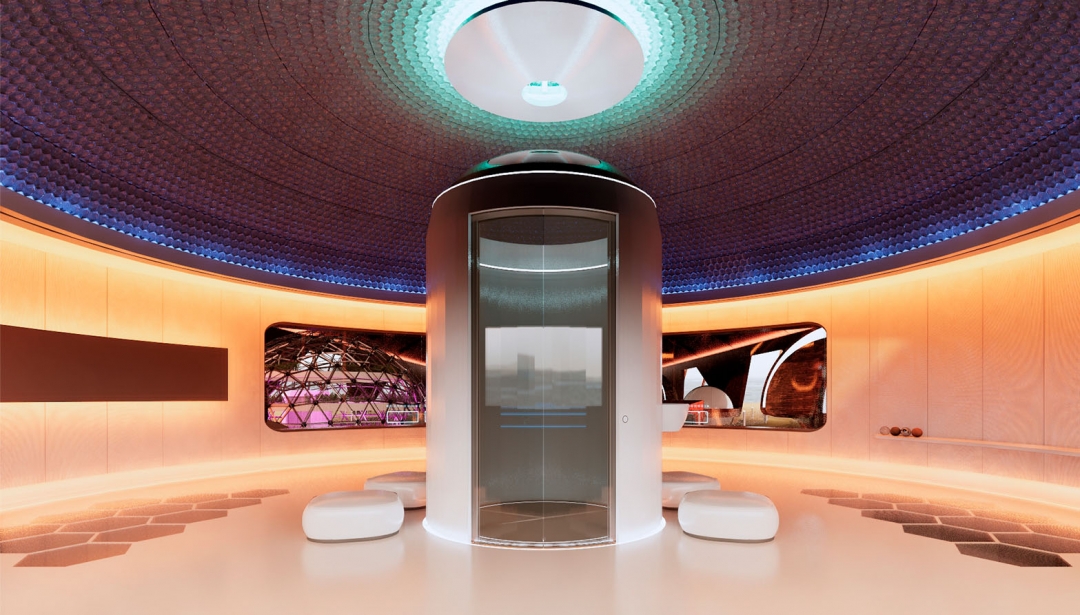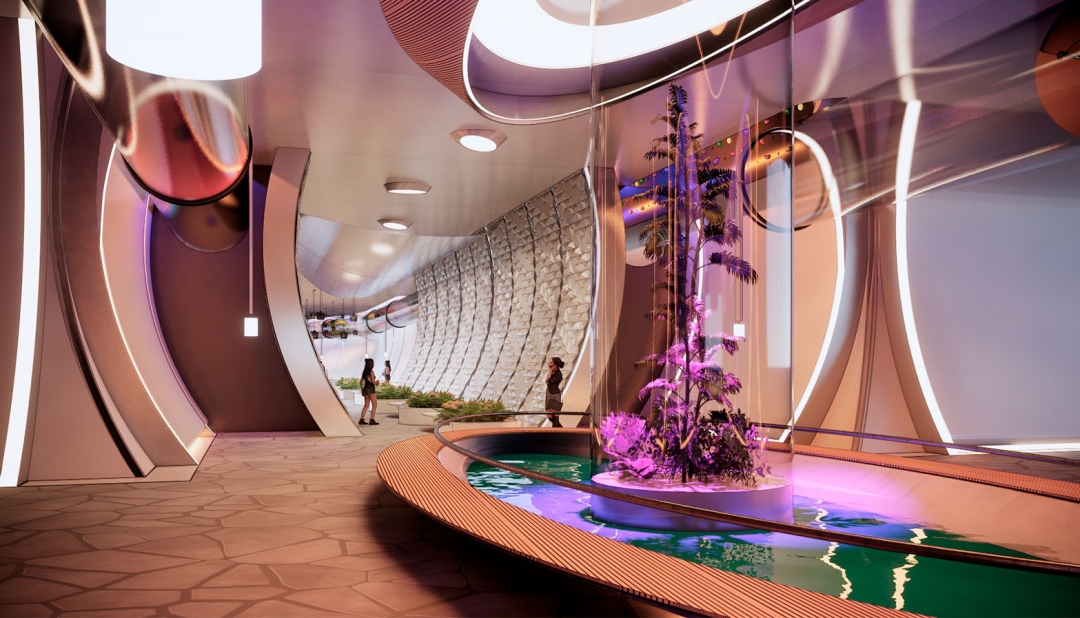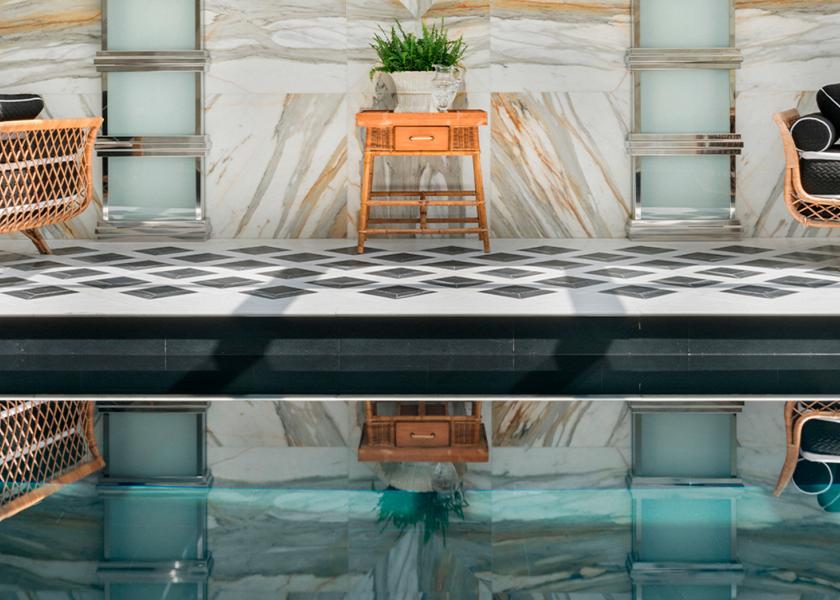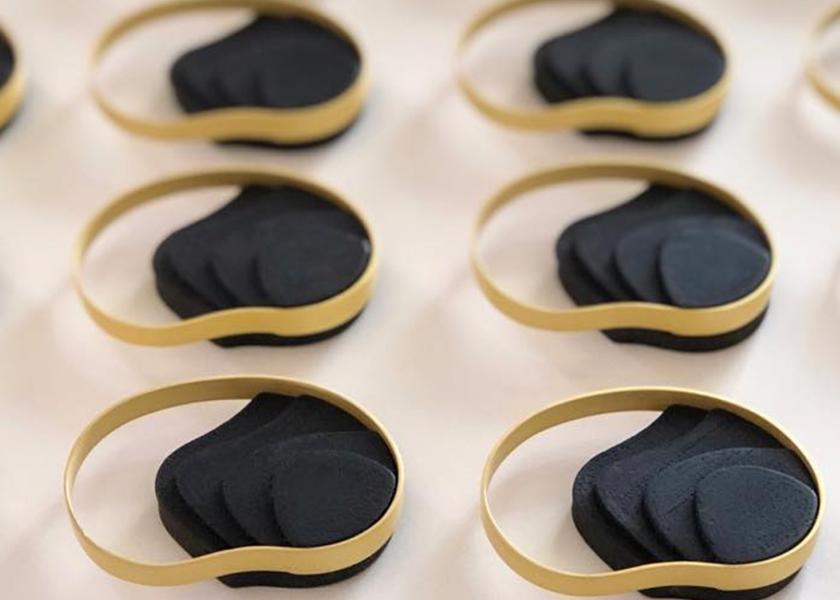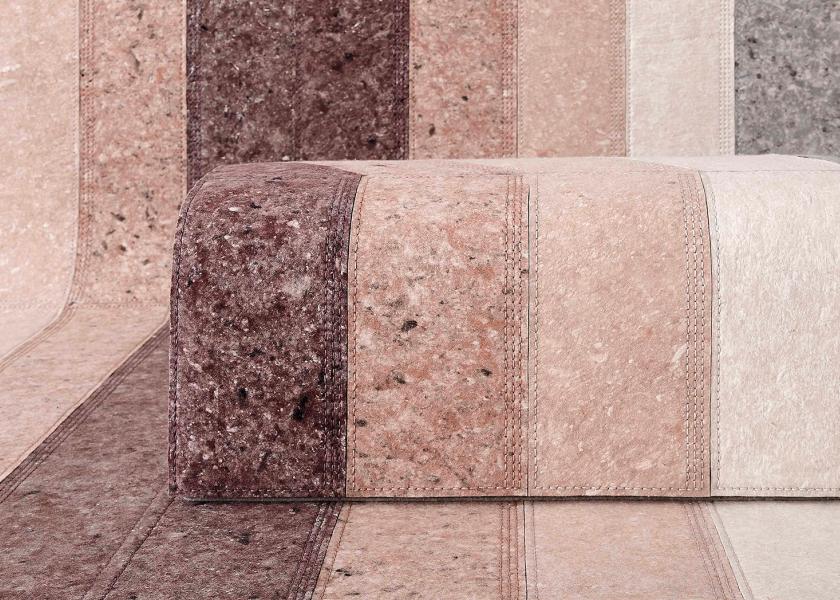ABIBOO
Out-of-this-world architecture
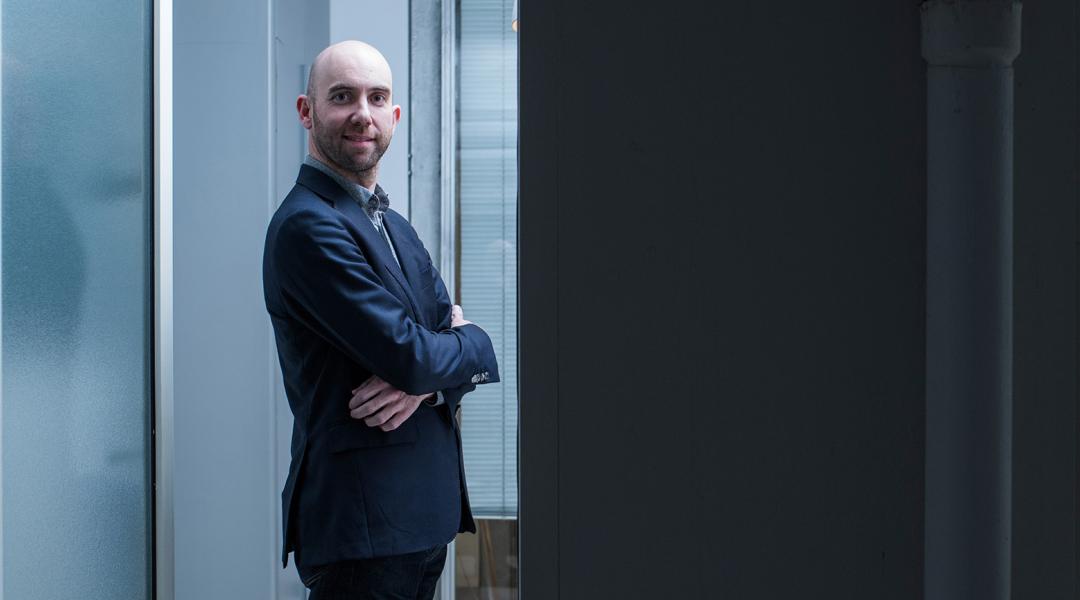
The blend of innovation, sustainability, digital art, and virtual reality that Alfredo Muñoz distils at his ABIBOO architectural studio has led him to conquer places as incredible as Mars itself. In his opinion, the key is thinking outside the box. His silver bullet? Travelling.
His childhood dream was being a builder, but he soon outgrew that aspiration. After studying architecture and living on five continents, Alfredo Muñoz (Burgos, 1979) decided to set up his own studio, ABIBOO. Today, his projects travel around the world with an extremely personal hallmark, a blend of innovation, digital art, and virtual reality. Talento a bordo chats with this architectural game changer, chosen as one of 200 visionaries from around the world. Luxury homes and bunkers are some of his proposals, but without a doubt, his most remarkable idea is creating a metaverse in Mars. It’s clear that he’s outgrown Earth.
Where does your passion for architecture come from?
I wanted to be an architect as far back as I can remember. When I was young, I dreamt of being a builder, because there was construction work near my house, and I wanted to build like they did. They warned me that it was an extremely tough profession and advised me to become an architect. When I discovered what architecture was, I decided that, yes, that’s what I wanted to do. Since I also loved drawing and enjoyed science and art, the combination was made for me. Although there was also a time when I thought about studying astrophysics, which I also loved. In fact, I won the Physics Olympics in Burgos and was really into astronomy.
And, years later, in 2019, how does it feel to be chosen as one of the “40 under 40” European Young Leaders by the Friends of Europe think-tank?
I feel immensely proud. Once you’ve been proclaimed a Young European Leader, you have the opportunity to meet with the 40 previous and next annual nominations, which we do three times a year. The goal is to generate ideas about how to make Europe a better place to live and add value to an ever-changing society. It’s fascinating and rewarding to be surrounded by such diverse people from the world of politics, art, business, or technology.
It must have been a long journey to get here...
I think that passion and a desire for adventure have been essential for the achievements made to date. In my case, I’ve been working 400 hours per month on average since I started my career when I was 23. Before that, I already worked part time since the age of 16, and I carried on doing so while studying architecture. When you love what you do, it’s not work. I believe that the beauty of design, innovation and any field linked to creativity is that every day is a new experience, and you are the creator of your own adventure.
“Through a virtual-reality immersive experience, we can see how we could live on Mars in a self-sufficient city in 40 years’ time”
Who have been your masters?
When I was 15, I used to help an architect in Burgos every weekend. I learnt what the job entailed pretty quickly. During my degree, I had the chance to work for prestigious Spanish architects such as Alberto Campo Baeza, Iñaki Ábalos and Juan Herreros. Then I started to travel and work around the world; I’ve lived on five continents. Since I was always fascinated by Asian culture, especially Japanese culture, I decided to finish my studies in Japan. There, I worked with Pritzker Architecture Prize Laureate Toyoo Itō for two years. Then I went to the US on holiday, to New York, and I fell in love with the city. I decided to try my luck at Skidmore, Owings & Merrill (SOM) in 2005, one of the largest architectural firms in the world, where I worked for five years.
And that’s when you decided to set up ABIBOO...
That’s right. While at SOM, I managed several large-scale projects in the Middle East and India; that’s why, when I created ABIBOO, I decided to open an office in New York, which was where I lived, in Madrid, because it’s in my blood, and also in Chennai, India, because it was 2010 and there was little construction work except for in emerging countries. I saw the opportunity to start large-scale projects in developing countries, which did not suffer the 2008 crisis like the West. Since then, we’ve been working in Latin America, the United States, Europe, South-East Asia and the Middle East. And always enjoying ourselves, of course.
In this time, what has your studio become?
We’ve been very lucky, because since the beginning we were able to carry out large-scale projects, especially in India, where many proposals were small cities of 50,000 people. They were in remote areas, and we became interested in topics such as sustainability, because in many cases they were settlements with no access to resources, with extreme temperatures, which needed to function self-sufficiently. We also worked on plenty of luxury home projects. The combination of both solutions has led to proposals such as the ones we work on now, which go beyond traditional architecture. The areas where we are doing more interesting work is in this combination of extreme environments, self-sufficiency, and technology, and in fields that are not connected to architecture, such as digital art and virtual reality. We created a platform where innovation is intersectional. Today, I conceive ABIBOO not only as an architectural studio, rather as an innovation platform associated to self-sufficiency, sustainability, and technology.
In fact, Louis Vuitton has chosen you among 200 visionaries from around the world.
Yes. They appreciated our interest in innovation and luxury and believed we could bring ideas to the table. To celebrate their 200th anniversary, they set up an extremely interesting project including architects such as Frank Gehry, artists, and actors. We quickly agreed. Louis Vuitton was a pioneer because he reinvented travel and we had to reinterpret the trunk he designed. We created an environment that responds to the user in real-time. The skin of the trunk adapts to sound, music, light... all through a virtual-reality platform. It’s an immersive experience where, as well as seeing a trunk, we enter a completely different inner world, where we have a deep architectural experience, with connections to nature, architecture, and space. We provide a different vision of the next travel frontiers, which will include trips to both space and the virtual world.
Speaking of space, you’re also working on a project on Mars...
With the Onteco project, which launched on the 6th of October, we aim to generate a metaverse on that planet. Through a virtual-reality immersive experience, we can see how we could live in a self-sufficient city in 40 years’ time. We are integrating other digital art and blockchain system tools to allow an experience that is as close as possible to reality, creating a digital twin of a city that is actually a settlement.
What other projects are you working on here on Earth?
We’re working on proposals as diverse as prefabricated bunkers that can be transported in containers, or others as fun as the Alabama Food Village, which consists of creating permanent structures to develop the cultural atmosphere of a city through music. As well as traditional projects, such as luxury homes, one in Segovia and another in India measuring 5,000 square metres.
And what inspires you to design such different things?
I’m really inspired by travelling. In fact, I’ve suffered a lot these last two years because, obviously, I couldn’t travel during the pandemic. When I travel, I love being immersed in diverse cultures, because that allows me to understand the way they think, which is often different to what we are normally used to. This is closely related to how I understand innovation, thinking outside the box. When the context forces us to think differently, interesting ideas arise automatically. Innovation isn’t about giving different answers to the same questions, it’s about asking different questions.
